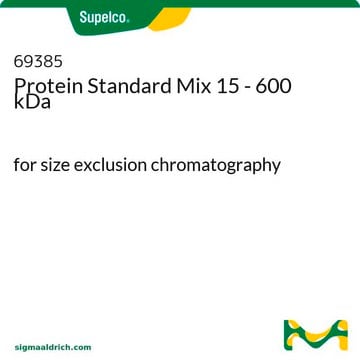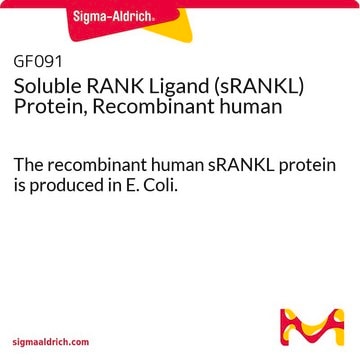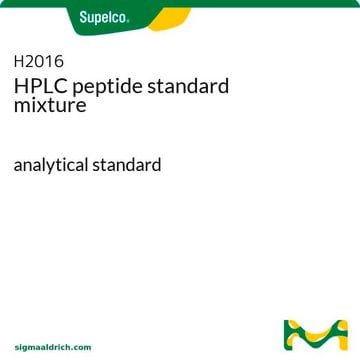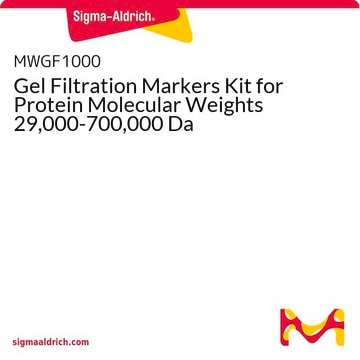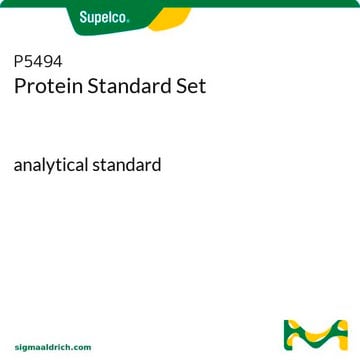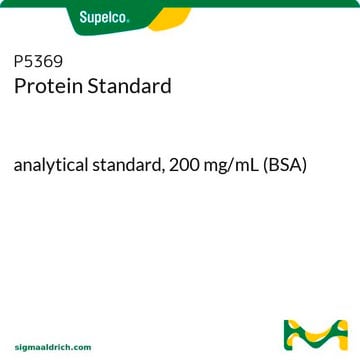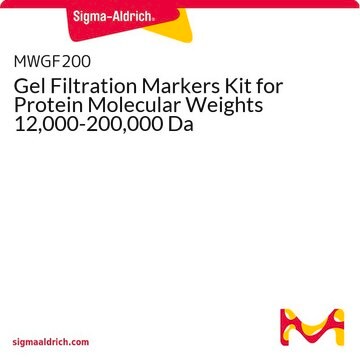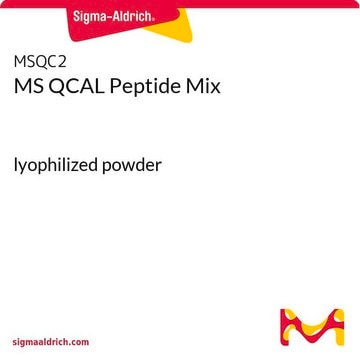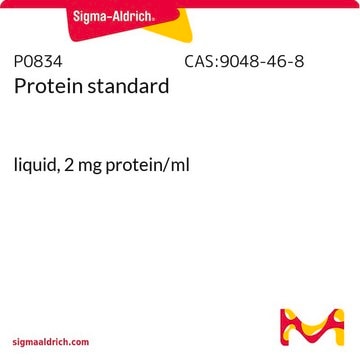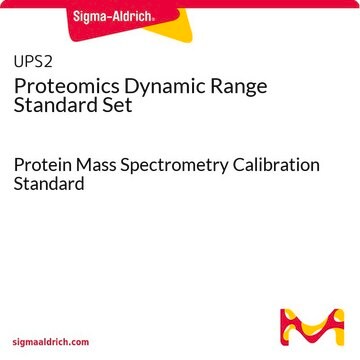Products may be shipped at a different temperature than the recommended long-term storage temperature. If the product quality is sensitive to short-term exposure to conditions other than the recommended long-term storage, it will be shipped on wet or dry-ice. If the product quality is NOT affected by short-term exposure to conditions other than the recommended long-term storage, it will be shipped at ambient temperature. As shipping routes are configured for minimum transit times, shipping at ambient temperature helps control shipping costs for our customers. For more information, please refer to the Storage and Transport Conditions document: https://www.sigmaaldrich.com/deepweb/assets/sigmaaldrich/marketing/global/documents/316/622/storage-transport-conditions-mk.pdf
H2899
HPLC protein standard mixture
analytical standard
Synonim(y):
Mieszanka kalibracyjna białek
Wybierz wielkość
489,00 zł
Wybierz wielkość
About This Item
489,00 zł
Polecane produkty
klasa czystości
analytical standard
Poziom jakości
Formularz
solid
klasy chemiczne analitów
amino acids, peptides, proteins
metody
HPLC: suitable
Zastosowanie
food and beverages
Format
multi-component solution
temp. przechowywania
−20°C
Powiązane kategorie
Zastosowanie
Opakowanie
Zastosowanie
Hasło ostrzegawcze
Danger
Zwroty wskazujące rodzaj zagrożenia
Zwroty wskazujące środki ostrożności
Klasyfikacja zagrożeń
Resp. Sens. 1
Kod klasy składowania
11 - Combustible Solids
Klasa zagrożenia wodnego (WGK)
WGK 3
Środki ochrony indywidualnej
Eyeshields, Gloves, type N95 (US)
Wybierz jedną z najnowszych wersji:
Certyfikaty analizy (CoA)
Nie widzisz odpowiedniej wersji?
Jeśli potrzebujesz konkretnej wersji, możesz wyszukać konkretny certyfikat według numeru partii lub serii.
Masz już ten produkt?
Dokumenty związane z niedawno zakupionymi produktami zostały zamieszczone w Bibliotece dokumentów.
Klienci oglądali również te produkty
-
How is shipping temperature determined? And how is it related to the product storage temperature?
1 answer-
Helpful?
-
-
How can I determine the shelf life / expiration / retest date of this product?
1 answer-
If this product has an expiration or retest date, it will be shown on the Certificate of Analysis (COA, CofA). If there is no retest or expiration date listed on the product's COA, we do not have suitable stability data to determine a shelf life. For these products, the only date on the COA will be the release date; a retest, expiration, or use-by-date will not be displayed.
For all products, we recommend handling per defined conditions as printed in our product literature and website product descriptions. We recommend that products should be routinely inspected by customers to ensure they perform as expected.
For products without retest or expiration dates, our standard warranty of 1 year from the date of shipment is applicable.
For more information, please refer to the Product Dating Information document: https://www.sigmaaldrich.com/deepweb/assets/sigmaaldrich/marketing/global/documents/449/386/product-dating-information-mk.pdfHelpful?
-
-
Could you provide an order of retention times of when each of these components elute off a protein C4 column (H2899 protein mixture)? Thank you.
1 answer-
The exact method is considered proprietary. However, for a C4 column, it should elute ribonuclease A first, followed by cytochrome C, holo-transferrin, and apomyoglobin.
Helpful?
-
-
What is each componant's actual molecular weight (ribonuclease A, cytochrome c, holo-transferrin and apomyoglobin)?
1 answer-
The molecular weight of each component is not reported. See below for the expected values:
Ribonuclease A: approx. 13.7 kDa
Cytochrome C: approx. 12.3 kDa
holo-Transferrin: 72.1 - 78.5 kDa
Myoglobin: approx. 17.6 kDaHelpful?
-
Active Filters
Nasz zespół naukowców ma doświadczenie we wszystkich obszarach badań, w tym w naukach przyrodniczych, materiałoznawstwie, syntezie chemicznej, chromatografii, analityce i wielu innych dziedzinach.
Skontaktuj się z zespołem ds. pomocy technicznej